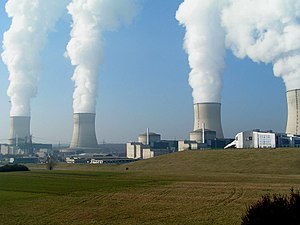Conventional nuclear power
Currently, all of the world's nuclear power plants

Scarcity of uranium-235
This is the main reason why nuclear power provides only a small fraction of the world's energy. Uranium-235 is a scarce mineral - far more scarce than fossil fuels.
If all the world's energy were to come from nuclear, we'd run out of uranium-235 in about 4 years.
Citation:
Uranium 2020: Resources, Production and Demand ('Red Book')
"The total recoverable identified resources to $260/kg U is 8.070 million tonnes U."
Citation: Key World Energy Statistics 2020 (IEA report) - Page 73 - Glossary - Nuclear
Does not include the fuel used in generating electricity. See [energy.tes] for that.
Citation: "Key World Energy Statistics 2020" IEA
- Page 47 - Simplified energy balance table - World energy balance, 2018
(calculation loading) We'd run out even faster if all nations were developed.
Possible solutions:
- Breeder reactors, to make use of uranium-238, which is over 100 times more abundant.
- Extracting uranium from seawater[unlikely to be viable]
Nuclear waste
When most of the uranium-235 is used up in the reactor, the remaining matter becomes "spent fuel" and must be disposed of. This nuclear waste is still radioactive enough to cause harm to anyone exposed to it without protective equipment. It remains this way for millions of years.
Possible solutions:
- Breeder reactors, which would continue to extract energy from the spent fuel until there's almost nothing left.
Risk of meltdowns
This section has not been filled in yet.
Weapons proliferation
This section has not been filled in yet.